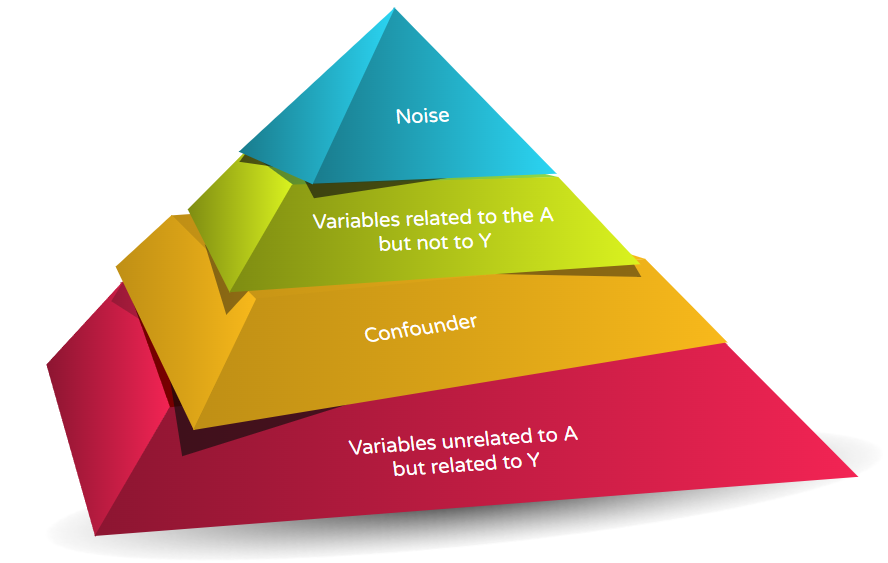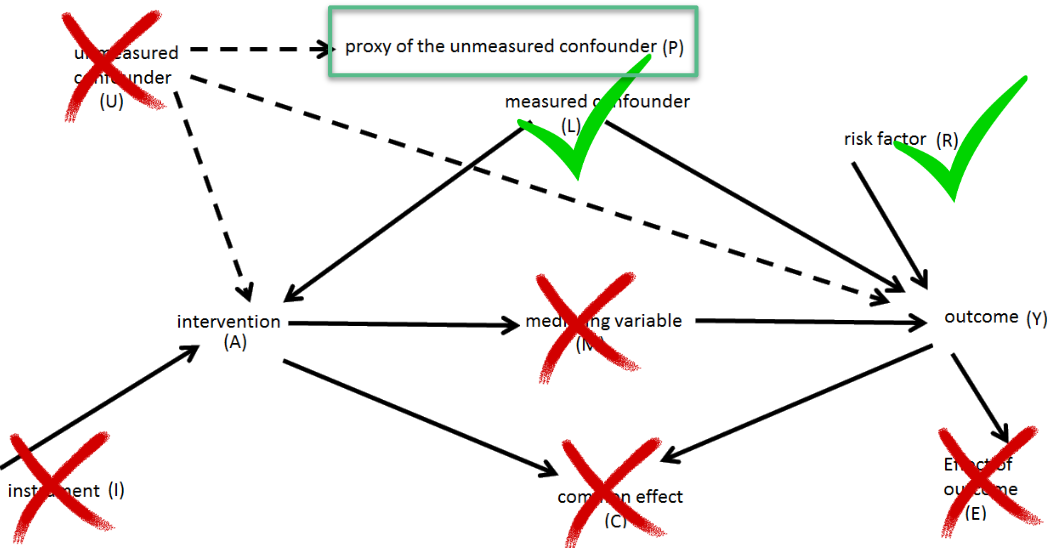
Machine learning
Understanding variable’s role
Confounders
flowchart LR C --> A C --> Y A --> Y style A fill:#90EE90; style Y fill:#ADD8E6; style C fill:#FF0000;
Adjusting Confounders help reduce bias
(Near) instruments
flowchart LR C --> A A --> Y style A fill:#90EE90; style Y fill:#ADD8E6; style C fill:#FF0000;
Adjusting for covariates strongly associated with the exposure: Adjusting for these variables can potentially amplify bias in the treatment effect estimate and increase standard error (SE).
Precision variables
flowchart LR C --> Y A --> Y style A fill:#90EE90; style Y fill:#ADD8E6; style C fill:#FF0000;
Adjusting for covariates strongly associated with the outcome: Adjusting for these variables can lead to decrease of the SE of the treatment effect estimate.
Noise variables
flowchart LR C A --> Y style A fill:#90EE90; style Y fill:#ADD8E6; style C fill:#FF0000;
Adjusting for covariates that are neither associated with the outcome or the exposure can increase the SE of the treatment effect estimate.
Overall picture

Choose variables associated with the outcome in general, as long as they are not mediator, collider or effect of the outcome. In hdPS, we chose proxies in the covariate assessment period (before exposure occurs), reducing the possibility of those proxies to be mediator, collider or effect of the outcome.